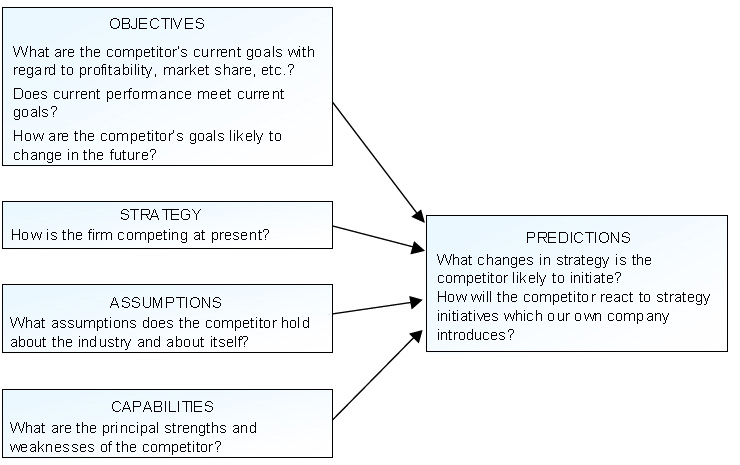
Elements of Competitor Strategy Analysis:
Competitor objectives, strategy, assumptions and capabilities
Principle:
Key competitor strategic analysis
Issues:
Uncertainty of rapid changing future – Increasing organisational empowerment (fluid organisations and strategy) – Implementation without organisational control
Structure of organisation and partners to respond effectively to unpredictable change
Complexity theory: Strebel, 1992 Industry Breakpoints – changing industry nature
Positive feedback: Chakravarty, 1997 Go with the flow – don’t resist
Options theory: Copeland & Keenan, 1998 Keeping options open, Luehrman, 1998 Portfolio of options
Strategy as revolution: Hamel, 1996 Resistance to change create ways for new entrants
- Identify unshakeable industry beliefs
- Search PESTLE discontinuities that create opportunity
- Understand core competences
- Identify revolutionary ideas that create unconventional strategy
Organisational Responsiveness: Capable of delivering goods effectively and efficiently in short term and adapt and embrace new recipes (creativity and innovation, redundant time, staff diversity, self managed groups) – need to shift organisational logic to make change happen – change top management
Applications:
Determine key competitors strategy change and reactions
Source of Competitor Strategy Analysis:
Grant (2016)






